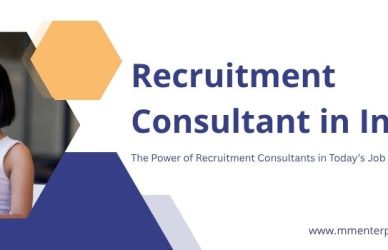
Have you been applying to jobs using the same resume every time? While a resume might seem like a static document, you should update it for each job application. Making these changes will get you the interviews you’ve been hoping for.
Do you tailor your resume for every job? Once you commit to finding a new role and applying for numerous jobs online, it can sometimes become very time-consuming and tiresome.
If changing your resume for every job sounds impossible, don’t worry: it’s not as hard as it sounds. You can get great results with small strategic changes, and we’re here to show you how to do it. Do this before your next job application, and you’ll be one step closer to hearing those two special words: “You’re hired!”
A simple way of doing this is picking skills and attributes out of the job specification and ensuring professional resume writing services reflects them, showing through examples that you have the skills and aptitude required for the role.
It will be obvious to the hiring manager if you just copy and paste exact words and phrases out of the job description, so instead try to mirror the tone and key points in your own words.
Steps below show how you can tailor your resume-
Key research- The first step is to research the job ad carefully and identify exactly what the recruiter is looking for. Highlight the skills or experience that seem important and make notes. If the company is advertising directly, have a look at their website, and do a Google search for the company name to find out if any current company or industry events might impact the job. Writing just one sentence that references your knowledge of a current situation could mean the difference between success and failure at this initial stage.
Keywords related to roles and responsibilities- The best keywords for your digital resume depend on your job, day-to-day responsibilities, target job and relevant experience. So, it is very crucial big challenge that how and where to put the keywords as per your technicality and industry requirement. In the resume summary mainly we have to more focus, only put relevant industry based keywords. So that recruiters and hiring managers fetch the applications easily.
Key capabilities- Once you know the recruiter’s priorities in terms of what they’re looking for, you can also customize your ‘key skills or capabilities list’. In its simplest form, this means re-ordering your list. Get more involved by rewording those key points and/or customizing them to suit the job requirements. Think about what the role needs and demonstrate how you can provide it through some past experience, success, training, or education.
Career profile- We always recommend including a customized career profile in your resume. The profile should introduce you and highlight what you bring to the role. It should briefly demonstrate your skills, experience, and successes, while highlighting how they add value. Most people see this section as fairly standard; however by customizing the content to address individual job requirements, or even using the same language as the recruiter you will put yourself a step ahead. Make it enthusiastic, passionate, easy to understand, concise and engaging and clearly demonstrate.
Order of previous roles: This is not something we recommend doing unless absolutely necessary because the resume can become confusing if not done well. However, where we may recommend doing this is if you have highly relevant experience in your past work history, with the recent roles not at all relevant. In this case, you should make a new section called ‘Employment History’ then list the relevant roles. Move your other more recent role descriptions to a section called ‘Other Employment History’. This means that the recruiter will see your ‘relevant experience’ first but the title of the section will give some insight into why that experience is not recent.
Use clear design and format- As i discussed in the above point that they don’t have enough time to read numbers of applications so this point is also co-relate with above. When it is come to designing and formatting the only thing that you make up in mind is resume must be in precise and clear format don’t use unusual formats that confuses the ATS, they also annoy recruiters and hiring managers who are in hurry to closing the position they have. As they only expect to find the relevant information in the specific particular areas only.



